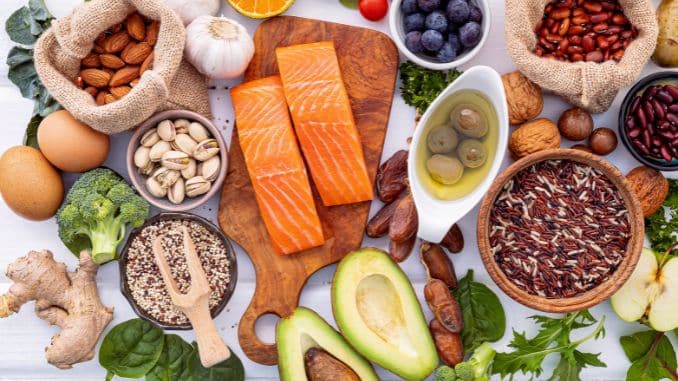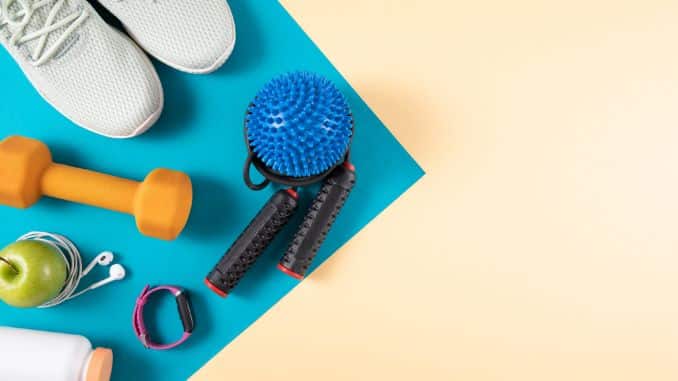Changing your body composition isn’t just about losing weight—it’s about improving your ratio of lean muscle mass to body fat. If you’re tired of crash diets and endless cardio with little to show, it’s time to rethink your approach.
In a revealing interview, strength coach and fat loss expert Ryan Faehnle breaks down what really works to achieve sustainable, visible results. We’ll unpack his key insights and give you actionable steps to gain muscle, lose fat, and transform your body—without obsessing over the scale.
What Is Body Composition and Why Does It Matter?
Body composition refers to the proportion of fat mass and fat-free mass (including muscle tissue, bones, and water) in your body. Unlike body weight or BMI (Body Mass Index) [2], which don’t distinguish between muscle and fat, body composition gives a clearer picture of your overall health.
Moreover, improving your body composition [1] means increasing muscle mass and decreasing fat mass—even if your total body weight doesn’t change much.
Why should you care?
Because a better body composition leads to:
- Faster metabolism
- Better performance
- Lower risk of high blood pressure [3] and metabolic issues
- A leaner, more athletic look
- Greater long-term health benefits
Ryan Faehnle’s 3 Steps to Change Body Composition
In his interview, Faehnle emphasizes a practical, no-fluff strategy to change body composition efficiently. Here’s what he shared:
Step 1: Stop Overeating “Healthy” Foods

Faehnle explains that many people unknowingly sabotage their fat loss by eating too much of the wrong “healthy” foods. One surprising tip?
People often eat too much fruit when trying to lose fat. Yes, fruit is healthy—but it’s still high in sugar and calories. It adds up quickly.
To support fat loss, you need to maintain a calorie deficit while focusing on nutrient-dense foods. Additionally, that means balancing healthy fats, protein, and fibrous carbs—not overloading on fruit smoothies or nut butters.
Step 2: Prevent the Rebound
A common mistake Faehnle sees? People crash diets, lose weight, and then regain it all. This happens because they go back to their old habits with no transition plan.
“Your body adapts quickly. When you return to your old diet or stop exercising, the weight comes back fast.”
Moreover, to maintain your progress, ease off gradually. Add calories slowly, reduce cardio slowly, and continue strength training. This prevents a slowdown in metabolism and protects your hard-earned lean muscle mass.
Step 3: Train Smart, Not Just Hard

Faehnle warns that most people focus too much on cardio and neglect resistance training.
“If you only do cardio, you risk losing muscle mass along with fat. That hurts your metabolism and body composition.”
Instead, prioritize strength training and weight training 3–5 times per week. Moreover, add cardio exercise to support, not dominate, your routine.
Moreover, this combo helps you build muscle mass [4], maintain muscle, and reduce body fat over time
Bonus Tips from Ryan Faehnle
Best supplement for fat loss? Look for safe thermogenics that increase energy expenditure. But remember—supplements support fat loss, they don’t create it.
- Don’t crash your metabolism. Always include adequate protein intake (especially from a high-protein diet) to stimulate muscle protein synthesis and aid muscle repair.
- Avoid common training mistakes. Moreover, using only light weights or high reps won’t build meaningful lean muscle. Additionally, gradually increase the weight you lift over time.
Final Thoughts: Body Recomposition Is the Real Goal
Forget the scale. Focus on body recomposition—the holy grail of fitness, where you lose body fat and increase lean mass simultaneously.
This approach:
- Shrinks your waist
- Sculpts your arms and legs
- Moreover, keep your metabolic health in check
- Helps you feel stronger and more energetic every day
It’s not about doing more—it’s about doing the right things, consistently.
Your Body Composition Action Plan
- Track Progress: Use a body composition assessment tool—not just your weight.
- Lift Heavy: Prioritize resistance and strength training.
- Eat Smart: Additionally, create a calorie deficit without sacrificing adequate protein intake.
- Be Patient: You’re building lean body mass and reducing fat tissue—that takes time, but it’s worth it.
- Avoid extremes: Over-restricting calories or overtraining can lead to muscle loss and fat gain.
Discover how to change body composition with simple tips to lose fat and build muscle. Check out our Stretch for Fat Loss!
FAQ’s
What is body composition, and why is it more important than body weight?
Body composition refers to the ratio of fat mass to fat-free mass (like muscle tissue, bones, and water) in your body. Unlike the scale, which only measures total body weight, body composition reveals your real health status. A person can lose weight but still have a high body fat percentage. Focusing on improving body composition—by decreasing fat mass and increasing lean muscle mass—is the smarter, long-term goal.
How do I start changing my body composition?
Start by combining resistance training (such as weight training or strength training) with a high protein diet and a moderate calorie deficit. Additionally, this triggers muscle protein synthesis, supports muscle growth, and helps you lose body fat effectively. Also, skip the scale obsession—track changes with body composition assessment tools or progress photos.
Can I lose fat and gain muscle at the same time?
Yes—this is called body recomposition, and it’s absolutely possible with the right plan. Additionally, you’ll need a structured exercise routine, consistent protein consumption, and smart nutrition and exercise pairing. While results may be slower than typical weight loss diets, they are more sustainable and body-shaping in the long run.
How much protein do I need to build lean muscle?
For most people aiming to build muscle mass or maintain muscle, a good rule of thumb is 0.7–1 gram of protein per pound of body weight. This supports muscle repair, enhances fat loss, and helps preserve lean mass in a calorie deficit. Moreover, always focus on adequate protein intake—it’s a non-negotiable part of body composition change.
What’s the best workout for improving body composition?
The best workout combines strength training (to increase lean mass) with some cardiovascular exercise (to support fat loss and heart health). Additionally, consider compound lifts like squats, deadlifts, and presses, paired with short and effective cardio sessions. Consistency and progressive overload are key to seeing measurable improvements in overall body composition.


